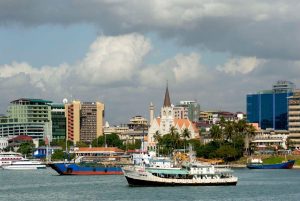Data shows 29 percent of locals travelled by air between 2017-2019, beating the continent’s average of 26 percent.
More Kenyans travelled by air over the past two years within Africa compared to their South African and Nigeria counterparts, despite high ticket costs and difficulty in getting visas, a survey showed.
A report by US travel technology provider, Sabre Corp, showed that about 29 percent of Kenyans travelled by air between 2017 and 2019 — beating Africa’s average of 26 per cent.
About 27 percent of South Africans travelled by air over the period compared to 21 percent by Nigerians. Sabre surveyed 5,869 travellers from the three countries of which 1,500 indicated that they had travelled in the past two years.
And in what could be indicative of opportunities for airlines and tourism service providers, the survey showed that given an opportunity to travel freely across the continent, Kenyans’ preferred destinations would be South Africa, Seychelles, Madagascar, Mauritius, and Ethiopia.
In a similar situation, more South Africans would wish to travel to Kenya than their Nigerian counterparts.
According to Sabre corporation survey, conducted from October 2017 to October 2019, air travel has increased by just two per cent in the three years since its 2016 survey.
Feeling Unsafe
Sabre, a travel technology company based with largest Global Distribution Systems provider for air bookings in North America, blames high costs and difficulties getting visas by African citizens wishing to travel abroad.
Further, the study shows that other obstacles hindering travelling include feeling unsafe, difficulty in bookings, complicated travel routes, a lack of routes and no desire to travel.
Travellers showed a significant increase in their willingness to travel since its 2016 report, almost half of travellers willing to spend more than $100 (Sh10,000) on ancillary services that improve their journeys — indicating a significant retail opportunity for African airlines.
“The appetite for travel has increased significantly since our 2016 study, yet actual air travel journeys have only very slightly grown, said Dino Gelmetti, vice president Europe, Middle East and Africa, Airline Solutions at Sabre.
“This highlights the extent of the opportunity for African carriers if they are able to break down barriers to travel, and help travellers to find their cheapest or most suitable fares.”
Biggest pain points for African travellers are — 35 per cent of respondents say they often experience delayed flights, 34 per cent says it takes long to proceed to the next flight, 28 per cent says there is not enough entertainment onboard, while 24 per cent says there is not enough to do at the airport.
Travellers are also frustrated with waiting times and overall experience of checking in, the study shows.
Away from the grim picture, the positive part is that respondents said if they were able to travel more freely within the continent, they would be willing to spend 27 percent more on travel and one-two extra trips per year.
Currently, the study estimates that Africans spend an average of $1,145 (Sh114,500) per person annually, with 27 per cent increase in travel spends annually to an estimated $156,700 (Sh156,700) if allowed to travel freely.
Given a chance to choose between their local airline over foreign airline, Kenyans first would consider cheaper tickets, comfort onboard, latest technology, and pride in the country’s airline comes last.
The study also shows that there is potential growth in customers willing to spend more on ancillary services, an indication of the retail opportunity for airlines that can effectively personalise offers.
Peace of mind
Current spend per traveller on ancillaries annually stands at $98 (Sh9,800), a figure deemed could increase to $123 (Sh12,300).
More Kenyans are willing to spend more on onboard food and beverages, extra checked luggage and in-flight entertainment as opposed to Nigerians and South Africans who would prioritise on in-flight Wi-Fi and insurance.
Travellers like the convenience of online booking but value the advice and peace of mind of booking through a physical agent.
The study recommends that air travel firms ought to make travel easy and accessible — break down barriers to travel by optimising routes and pricing, and improving the shopping, booking and check-in experience.
Expand of reach to capture both leisure and business travellers is necessary.
They are also advised to leapfrog foreign carriers by operating digitally — invest in the latest digital technology to help address traveller pain points and improve the travel experience.
Airlines also ought to inspire travellers — adopt a multichannel sales strategy across both new and traditional channels such as through travel agents, websites and mobile.
The Sabre study further advises them to operate like a retailer — invest in data-harnessing technology to help understand each traveller’s individual needs, offering each person the right product in the right context at the right time.
Improved demand has solidified the performance of the aviation sector in Kenya with the International Air Travel Association (IATA) projecting that the industry’s growth is expected to double in the next two decades, a move that is expected to boost the gross domestic product (GDP) by $11.3 billion.
The growth is expected to stem from an increase in journeys made through the Jomo Kenyatta International Airport in Nairobi that is expected to grow by an additional 11.3 million passengers, creating over 449,000 jobs.
“Over the next 20 years the Kenyan market could more than double in size, resulting in an additional passenger journeys … and a $11.3 billion boost to GDP by 2037,” says IATA regional vice president Muhammad Ali Albakri.



